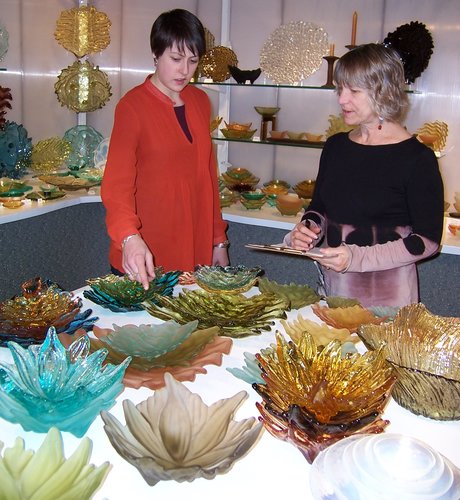by Carolyn Edlund
Increase your art sales by understanding your buyer and their motivations.

A few years ago, I ran across a company at a trade show selling graphic novels that depicted Bible stories. These novels were action-packed and exciting, with high quality Marvel-style illustrations. And although they were written for teens in a format that appealed to that age group, the company had different target customers in mind.
Who were the ideal customers for these books? Christian parents, who wanted their kids to read biblical material rather than stories like “Sin City.” Targeted through advertising, they would purchase and put these novels in their children’s hands. Church youth group leaders were also prospects. They would buy multiple quantities of novels that taught classic religious stories written in a contemporary form that teens would want to read.
As an artist, you might be in a similar situation, where your ideal buyer is not always the end user. Do you know who you are really selling to? What are their motivations, and how will they make a purchasing decision? The more you prepare to address the needs of the real decision makers, the better your sales results will be.
Decision makers vary in different situations. Let’s take a look at some potential scenarios:
Selling to the Middle Man
If you want to pursue gallery representation, you should have a portfolio presentation ready to impress the gallery owner or manager. Even though the end user is the collector, you have to approach and meet with the gallery first to secure the opportunity. When you do so, be prepared to discuss the profile of your existing collectors, to establish whether they match the gallery’s audience. This will help you seal the deal.
Similarly, if you plan to make work in production and sell wholesale to stores, understanding their needs and challenges is essential. These buyers don’t say “yes” because they personally love what you make. They make buying decisions based on what they know their retail customers want. Retailers often also need display and merchandising options, signage and great packaging that make it easy to stock your work in their store. Knowing this up front will help you structure your offering to fit their needs and land the account.
Selling to a Couple
If you make high-end work appropriate for a residence or vacation home, a sale may hinge on both partners agreeing to the purchase. When that is the case and you only meet one of them, know that your “sales cycle” has just begun. Get contact information for those important follow-up emails and phone calls. If possible, arrange to meet with both of them and make a presentation. You might make arrangements to visit their home to discuss the acquisition. Or, obtain a photo of their space and use Photoshop or an app like Art Placer to give an in situ preview of your work displayed in their home.
The Corporate Customer
Is your art perfect for corporate spaces? Your prospect might be an interior designer or art consultant working on a project that requires approval from a company executive. In early discussions, learn about the ultimate decision maker and their priorities, such as budget, timeline, impact of the art, or other factors. If you plan to build your career in this niche, you must have a clear understanding of the industry and how it works. Research and planning will put you in a good position to anticipate needs and make presentations that fulfill them.
Gift Sales
Many artists and makers create work that is perfect as a gift. This means you need to have a bead on the mindset of the gift giver as well as the recipient. If you make clothing for children, for instance, your customer will likely be a mother or a grandmother. Even though your designs might delight a child, they certainly won’t be making the purchase.
Take into consideration what the buyer needs to know. Is your handmade clothing soft and comfortable, eco-conscious, easily washed, stain-resistant? To make the sale, you may have to be able to drop ship to a grandchild in another state, offer no-hassle returns and exchanges, and even gift wrap. Put yourself in your customer’s shoes. What exactly do they need to feel comfortable enough to say “yes” to the purchase?
Specialty Markets
Let’s say you are a jewelry designer with a collection that is perfect for the bridal market. You might be selling to a woman, perhaps a bride, her mother or someone involved in the event. What is her point of view and how is she making decisions? Given that, how will you present your work and relate to this shopper?
On the flip side, your client may be the prospective groom searching for a perfect engagement ring. What are his biggest concerns? What questions may remain unasked, that you need to anticipate and draw out in conversation? How can you sell consultatively to ensure that this customer will not only feel confident but excited about his very special purchase?
No matter what sales channel, specialty market or goals you have, you will encounter different types of buyers and decision makers. Observe your customers carefully to ascertain their motivations and understand how they think. When you are able to tap into what they need and want, you can structure your sales approach to fit them.


Wow, you covered a lot of different scenarios to market your art. And with each, the strategy differs. I would say the toughest one to try would be gallery representation. It can be very enduring. And actually, it is an art within itself. Each outlet scheme would have its own buyer’s motivations to purchase. Thank you, Carolyn, for writing this. It helps an artist to try to understand what is involved with marketing our art.
Thanks, Kevin. As in any sale, when you know what motivates the purchaser, you have the key to selling them!